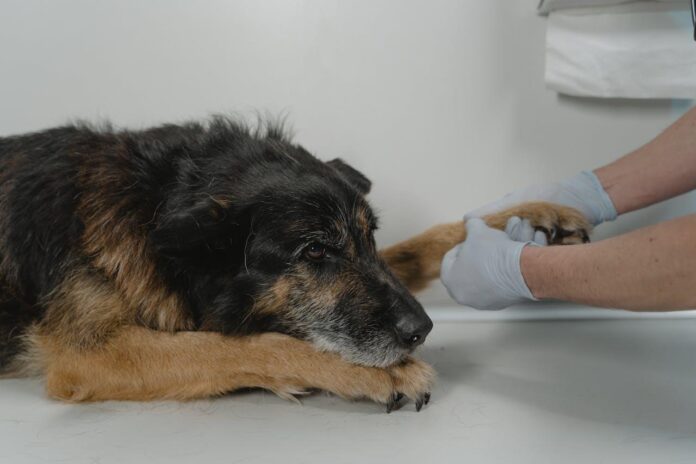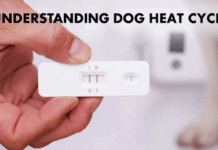Last Updated on August 15, 2024 by Dogs Vets
As dogs age, their mobility often declines due to issues like arthritis, joint stiffness, and muscle weakness. This can lead to a reduced quality of life. Your dogo’s everyday activities can become even more challenging for them.
In this guide, we’ll explore practical strategies to improve your senior dog’s mobility – so you can ensure your old best bud can stay active and comfortable in last days too.
Understand Causes of Reduced Mobility
As dogs age, their bodies undergo changes that can significantly impact their mobility. One of the most common age-related issues is arthritis, which affects nearly 80% of dogs over the age of eight.
Arthritis causes inflammation and pain in the joints, which leads to stiffness and difficulty moving. Muscle atrophy is another frequent issue, which results from decreased physical activity and natural muscle degeneration. It further limits a dog’s ability to walk, run, or play.
Health conditions also play a crucial role in reduced mobility. Hip dysplasia (a genetic disorder that causes improper development of the hip joint) can lead to pain and difficulty walking.
Obesity worsens joint problems by placing extra strain on the dog’s skeletal system, increasing the risk of arthritis and other joint issues. Plus, neurological disorders, such as degenerative myelopathy, affect the spinal cord. It usually means progressive weakness and loss of coordination in the hind legs for the dog.
Behavioral signs of mobility issues can include:
- Reluctance to walk
- Difficulty standing up after lying down
- Noticeable decrease in interest in physical activities
Dogs may also show signs of pain, such as limping, whimpering, or avoiding stairs. It’s essential to recognize these signs early for timely intervention and improving your dog’s quality of life.
Consult the Vet
Regular vet visits allow your vet to monitor any changes in your dog’s movement, detect early signs of joint or muscle issues, and adjust care plans as needed. It can help prevent minor mobility problems very early on.
If your dog’s vet suspects a joint or bone problem, they’ll request diagnostic tests like X-rays and blood tests to detect mobility issues. X-rays are commonly used to visualize bone and joint structures, helping to identify conditions like arthritis, hip dysplasia, or spinal problems. Blood tests can reveal underlying health issues, such as infections or metabolic disorders, that might affect mobility. After diagnostic test, they may conduct physical exams to assess your dog’s range of motion, muscle tone, and pain levels.
Based on the findings, your vet will create a tailored treatment plan. This plan may include medications to manage pain and inflammation, such as nonsteroidal anti-inflammatory drugs (NSAIDs). Supplements like glucosamine for dogs and chondroitin for dogs can support joint health.
In more severe cases, surgical options, such as joint replacements or corrective surgery for hip dysplasia, may be recommended.
Diet and Nutrition
Excess weight can deteriorate joint issues like arthritis. It can ultimately lead to increased pain and decreased mobility.
Joint supplements, such as glucosamine for dogs, chondroitin, and omega-3 fatty acids, are beneficial in supporting joint health by reducing inflammation and promoting cartilage repair.
Additionally, specialized diets formulated for senior dogs can further support joint health and overall mobility. These diets often include higher levels of joint-supporting nutrients and are lower in calories to help manage weight.
Exercise and Physical Therapy
Low-impact exercises like walking, swimming, and controlled play are excellent for maintaining your dog’s muscle mass and flexibility without putting undue strain on their joints. These activities help keep your dog active while minimizing the risk of injury.
Professional physical therapy offers additional benefits, including hydrotherapy, massage, and acupuncture, which can relieve pain, improve mobility, and enhance overall well-being.
At home, you can support your dog’s mobility with gentle stretching and range-of-motion exercises. These simple, safe activities help maintain joint flexibility and muscle strength.
Environmental Modifications
Mobility aids such as ramps, harnesses, and orthopedic beds make it easier for your dog to navigate their surroundings and rest comfortably. But remember, a safe living space is also crucial; consider using non-slip mats to prevent falls and keeping food and water within easy reach.
What’s more, accessibility improvements like raised feeding stations and easy-to-access resting spots can make daily activities less strenuous. It could help your dog move around with greater ease and confidence. These simple adjustments can greatly enhance your dog’s quality of life as they age.
Final Words
Before we sign off, there are some alternative therapies that we’d like you to explore – these include acupuncture, chiropractic care, and laser therapy. They can play significant role in relieving pain, reducing inflammation, and enhancing mobility.
By combining these treatments and making necessary lifestyle adjustments, you can help your dog stay active, comfortable, and enjoy a better quality of life in their golden years!

















